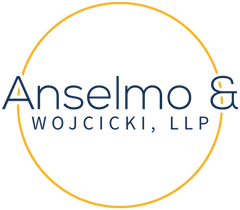Homeowners Insurance 101: What’s Changed and What Still Holds True
- Anselmo & Wojcicki
- Sep 17
- 4 min read
Don’t leave it to chance. Get homeowners insurance and save yourself a huge headache later.
Homeowners insurance is something most buyers just check off of the list as a requirement of home ownership, without truly considering the details of the plan. Owning a home isn’t just about closing day and taking the keys, it’s about protecting your investment. Even if you never file a claim (and we sincerely hope you don’t), it’s critical to know exactly what your policy does and doesn't cover.

What you should know about homeowners insurance
Do you need homeowners insurance?
Yes, absolutely.
Homeowners insurance shields you from a variety of events ranging from basic repairs to massive costs of structural damage, disasters, and liability. If you have a mortgage, lenders typically require it. But even if you’re mortgage-free, going without coverage means you’ll foot the bill—maybe thousands, maybe tens of thousands—when disaster strikes.
What does homeowners insurance cover today?
While homeowner policies vary, most include:
Dwelling protection: Covers structural damage (like from a fallen tree)
Coverage for personal belongings: Protects what’s inside your home
Liability protection: Covers injuries on your property or damage you cause
Newer considerations:
Roof condition matters more than ever: Premium differences between newer and older roofs are widening significantly
Extreme weather is changing the market: Floods, wildfires, and severe storms are pushing insurers to raise premiums, restrict coverage, or even stop writing new policies in high-risk regions
Resiliency requirements are growing: Certain home upgrades (like storm-resistant windows or updated electrical systems) may be required just to qualify for coverage or to keep premiums reasonable
Types of Homeowners Insurance: Expanded and Clarified
Not all policies are created equal. Here’s a quick breakdown of the most common types:
HO-1 (Basic Form): The bare minimum, covering only a short list of “named perils” like fire or theft. Rarely offered today.
HO-2 (Broad Form): Expands coverage to more perils than HO-1 but still requires events to be explicitly listed.
HO-3 (Special Form): The most common policy. It generally covers your home for all risks except those specifically excluded (like floods or earthquakes). Belongings, however, are usually only covered for named perils.
HO-5 (Comprehensive Form): A step up from HO-3. It’s “open peril” coverage for both the structure and your belongings, often at replacement cost rather than depreciated value. Ideal for those with higher-value homes or possessions.
HO-6 (Condo Insurance): Covers what’s inside your condo or co-op unit, while the association’s master policy covers shared areas.
HO-7 (Mobile/Manufactured Home): Tailored coverage for mobile or manufactured homes (stationary only).
HO-8 (Older Homes): Designed for historic or high-value older homes where the replacement cost may exceed the market value. Often reimburses at actual cash value rather than replacement.
Note: Flood and earthquake coverage aren’t included in standard HO policies. These require separate policies or endorsements.
2025 Market Realities: Why This Matters More Now
Premiums are up, way up.
Nationally, average premiums now hover around $2,800–$3,000 annually.
Illinois homeowners are feeling it, too. In mid-2025, a nearly 27% increase was approved, adding hundreds of dollars per year to many households’ bills. For some, this is one of the largest single-year hikes in memory.
Insurer withdrawals: In high-risk states like California and Florida, major carriers have scaled back or pulled out. While Illinois isn’t seeing mass withdrawals, rising storm risk and inflation are still driving costs higher.
What You Should Do: Make Your Policy Work For You
Review policy form and ensure it matches your home type and coverage needs.
Assess your home’s risk environment: floodplain maps, hail history, or fire risk zones can change how much coverage you need.
Stay proactive on maintenance: a newer roof, storm-resistant upgrades, or electrical improvements can lower premiums and improve eligibility.
Know your backup options: if insurers scale back, you may need to consider state FAIR plans or E&S (Excess & Surplus) carriers, though these usually cost more.
Look for state or local programs: Illinois has seen discussions around risk-mitigation incentives, and other states (like Florida) are rolling out grant programs to help homeowners harden their homes against storms.
Closing Thoughts
You bought a home. Now protect it intelligently. 2025’s insurance landscape has shifted with premiums up, climate risk front and center, and policy types evolving. Understanding what you have, what you need, and how risk impacts your wallet isn’t optional—it’s essential.
Need help dissecting a quote, comparing HO-3 vs. HO-5 pricing, or finding mitigation programs in your area? We’ve got you covered, reach out to our team today! We’re here to help you make smart, informed decisions.
About Anselmo & Wojcicki, LLP
Anselmo & Wojcicki, LLP is a multi-disciplinary law practice based in Schaumburg, Illinois, specializing in real estate, estate planning, tax planning, litigation, eviction, business formation, and the sale and purchase of businesses. Our commitment to our clients and our values set us apart from the crowd. Our team of legal specialists has a wealth of experience and expertise to help you meet your legal needs. We are dedicated to providing quality service and building lasting relationships with our clients.
.png)



Comments